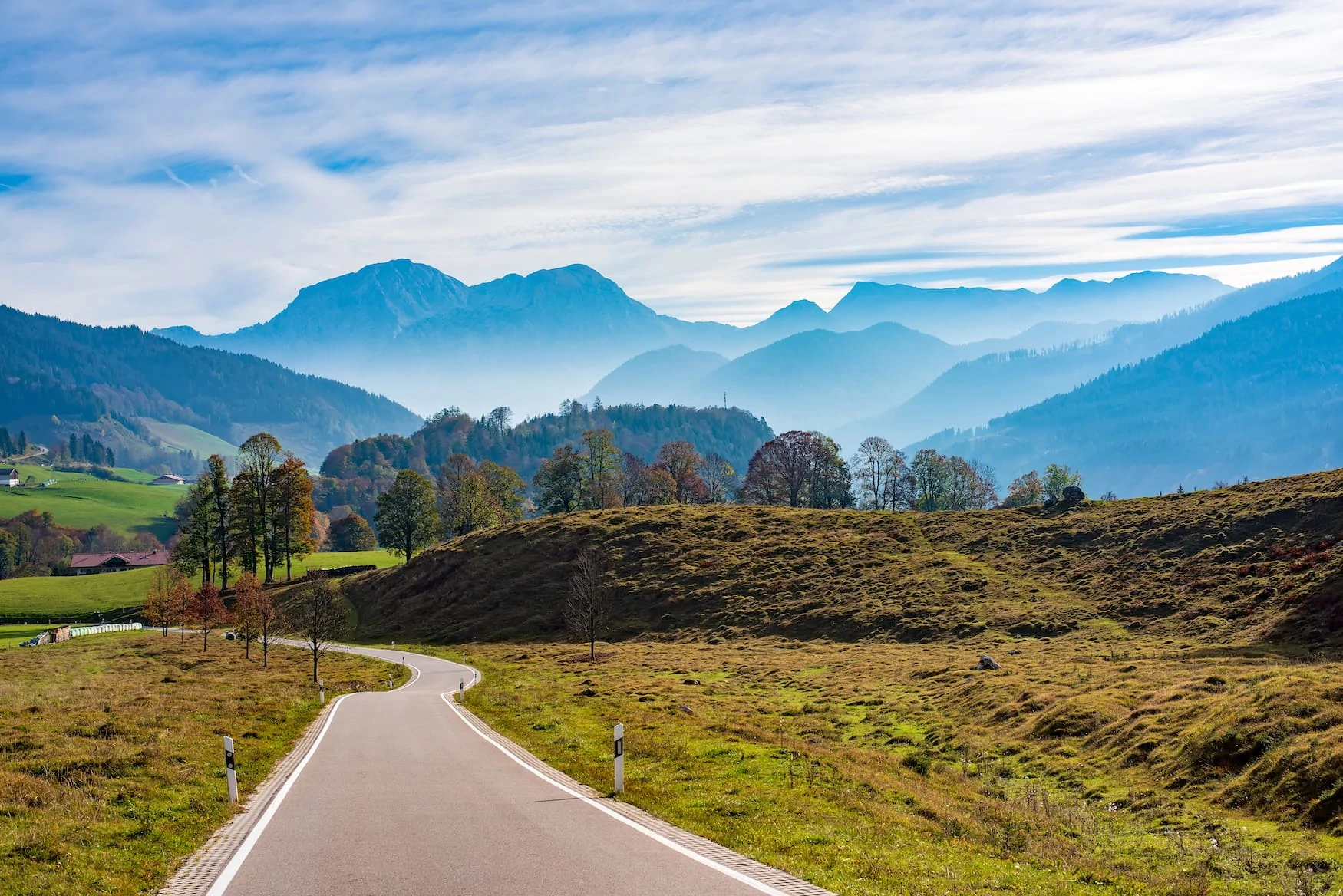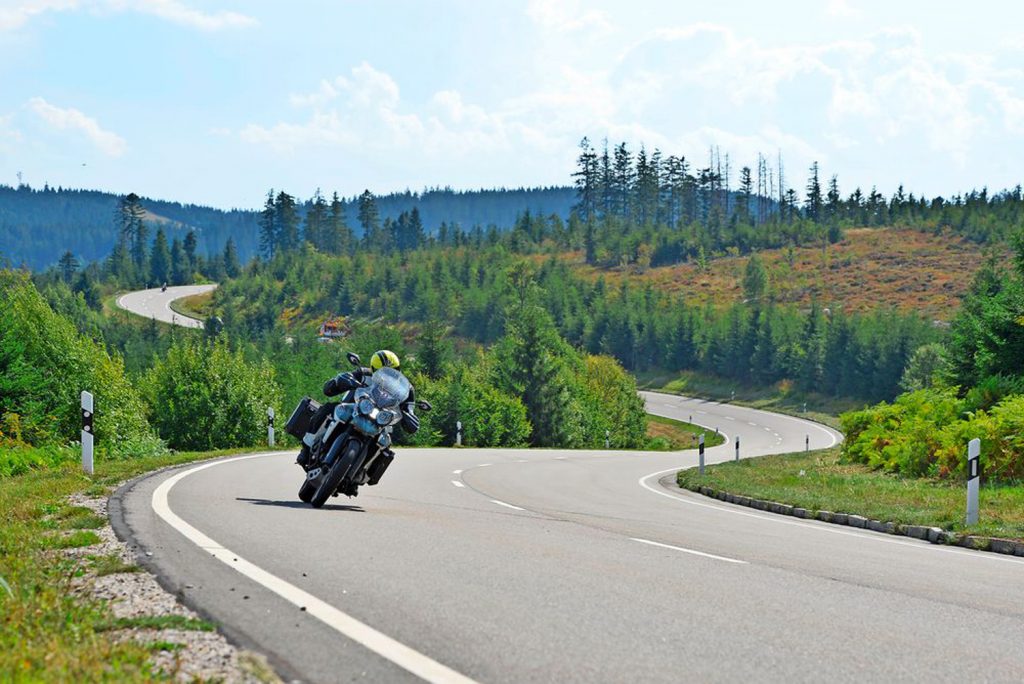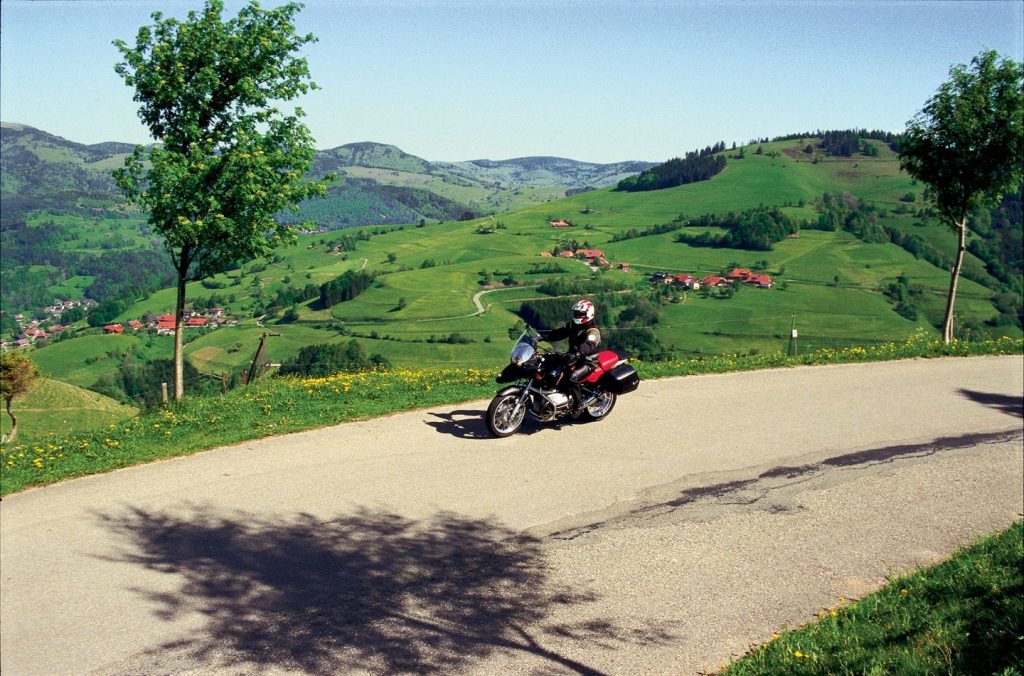Rides
Amsterdam to Rome twelve day trip
Stops and Meeting points
Hollenstedter Hof, Am Markt 1, D-21279 Hollenstedt
Places to stay
Motorbike Hotel, Hollenstedter Hof, Am Markt 1, D-21279 Hollenstedt



Requirements
| Carnet de Passage | no requirements |
| Insurance | UK issued Green Card |
| International driving permit | not required |
| Travel Visa | no requirements, 90 days within a 180 day period |
Riding in Germany
You need understandable documents.
As a tip, it is to laminate all of your key documents or otherwise waterproof them. It is also highly recommended to scan all your original documents and email them to an easily accessible email address.
It is also worth printing off the Constat Amiable D’accident Automobile, which is used across numerous and other countries (the downloadable one on our website has English as well as French).
What’s the speed limit in Germany?
Urban limits are 50km/h (30mph) unless posted otherwise – the start of an urban limit is effectively signalled by the town name sign, and the end by the same name with a red diagonal line through it. Within those areas there will often be 30km/h (18mph) limits in residential areas or near schools etc, and it’s worth pointing out that you’re legally required to exercise extra caution near children and elderly people, and be able to stop safely without danger of collision if necessary. Outside urban areas the national speed limit on normal A-roads is 100km/h (62mph) for cars and bikes. For motorways, see below.
If you see a blue sign with white lettering saying, for example: ’80-120km/h’ that indicates an advisory speed range for that stretch of road.
Two things everyone knows about the Autobahn: firstly, they were invented by the Nazis to speed troops along to the frontiers, and secondly, there’s no speed limit. Both of these ‘facts’ are mostly wrong…
The first motorway in Germany – and for that matter, the world – was started just before the first world war, and the programme of building others was well under way long before Hitler’s mob came to power in 1933. During the war the autobahnen were more likely to be used as airfields than transporting troops (who went by train instead).
These days there are about 12,000km of Autobahn across Germany, and about half that length is covered by speed restrictions of one form or another, usually a maximum of 130km/h (80mph). For the rest, although there’s no specific limit, there is an advisory limit of 130km/h, and exceeding that is taken as tacit admission that you also accept the consequences if it all goes wrong – which might mean being liable for damages etc if you cause an accident. You’re also held to a higher standard of riding if exceeding the advisory limit – even a minor offence like failing to indicate when changing lanes could see you hit by a serious fine.
Even where there’s no limit, you won’t necessarily be able to go for it – traffic jams are common, especially at peak times (see note on filtering below). There is also an overriding rule that says you mustn’t ride at a speed that exceeds your ability to stop within your line of sight, and you also need to keep checking your mirrors, because no matter how fast you’re going, there may well be someone faster coming up behind.
Basically, have fun but be sensible about it.
What are the police like in Germany?
The German system of policing is fiendishly complex, with powers vested mostly in the local states rather than at national level. That’s meant in the past that different states would have different uniforms and police vehicle liveries, the latter making it harder to work out whether that dot in your mirror is something to worry about. These days it’s pretty much standardised as silver and blue for vehicles (although Bavaria and Saarland have yet to comply and use green and white or silver) so keep any eye out.
Unmarked vehicles are also common, but almost always German-made.
On-the-spot fines of up to 35 euros for minor offences are the norm in Germany. For anything above that – which basically means more than about 25km/h (15mph) over the limit – they can take more as a deposit against the likely higher fine, which will be imposed by a court. If you refuse to pay (or can’t for whatever reason) they can impound your bike until you do.
What kit and documents do I need to ride in Germany?
Some sources will tell you that you also need an Umweltplakette (Emissions Sticker) to enter low emissions zones in many German cities. That’s true for cars, but for the moment at least, motorcycles are exempt. The same sources say you have to carry a warning triangle and a first aid kit, but again that’s not true for motorcycles (although the latter is a good idea anyway).
You must ride with dipped beam on at all times.
What other roads are good in Germany?
Germany’s peppered with fantastic roads. Some of them – called Ferienstrassen – are specifically signposted as being worth exploring. Arguably the best of these is the Deutsche Alpenstrasse – the German Alpine Road. Skirting the Austrian/German border from Lake Konstanz in the west to the Königssee in the east, its well-maintained, well signposted, and beautifully scenic. At 450km from start to finish, you could do it in a day, but you’ll want to stop and take many, many photos along the way.
If you’re really ambitious, you could try following the Deutsche Motorradstrasse. Best make sure someone’s feeding the cat while you’re away though – the full route is over 9000km…
What’s the law on loud exhausts in Germany?
In a country where you’re not even allowed to mow your lawn on a Sunday or run your washing machine after 10pm for fear of disturbing the neighbours, noisy bikes are becoming increasingly unpopular.
There have been calls – and attempts at passing laws – banning bikes from particular roads and towns, and even banning bikes altogether on Sundays.
For the moment we can’t find any evidence of bans actually being put in place, and Germany’s Transport Minister recently met biking pressure groups to assure them he’s got no intentions – currently – to institute bans, but that doesn’t mean it won’t happen one day. Proposals are already under way to reduce sound levels for new bikes to a whisper-quiet 80dB(A), and new sound-metering electronic notice boards are popping up all over the place, flashing red if you’re making too much noise (although they are only advisory, so far). In the meantime if you have a noisy pipe don’t be surprised if you’re pulled over, noise-checked and fined.
Is filtering or lane-splitting legal in Germany?
Yes, filtering’s legal in Germany, but only when other traffic is completely stationary, and never allowed on the Autobahns.
Lane splitting – cutting between lines of moving traffic – is verboten (that’s forbidden, in case you hadn’t guessed).
Please note, this page was correct when written in January 2025.
